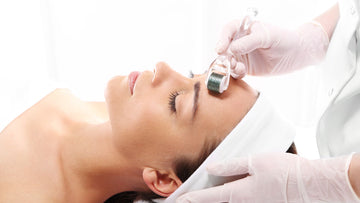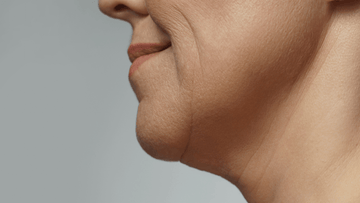Blog
Sensitive Skin Care Guide: Definition, Symptoms, Causes, and Soothing & Improvement Methods

**Definition of Sensitive Skin** The term "sensitive skin" was mentioned as early as 1947 in scientific publications (1). A more precise term would be **Self-perceived Sensitive Skin**. Sensitive skin affects approximately 55-57% of the Asian population (2). Sensitive skin refers to: skin that exhibits subjective symptoms such as itching, redness, heat, and stinging in response to various external/internal stimuli that typically should not cause discomfort. These subtle stimuli usually do not affect healthy skin and lack objective signs. Due to the subjective nature of this clinical condition, there is a lack of specific or preferred diagnostic methods and interventions, making diagnosis challenging. Managing sensitive skin requires an individualized approach, taking into account various biological, neurological, and psychosocial factors that affect sensitive skin. Currently, the BoSS (Burden of Sensitive Skin) questionnaire and the Sensitive Scale-10 (SS-10) are commonly used comprehensive diagnostic tools. **Causes of Sensitive Skin** **Complications Associated with Sensitive Skin** In a study involving 1,000 participants in Korea (of which 56.8% had sensitive or very sensitive skin), the likelihood of having acne, atopic dermatitis, and facial flushing was more than three times higher in the sensitive skin group compared to the non-sensitive group, and the likelihood of seborrheic dermatitis was more than twice as high. Genome-wide association studies have also found that rosacea (rhinophyma) is more common among individuals with sensitive skin (4). **Managing Conditions** **Severe Periods** This refers to a high sensitivity to all substances, including topical products, environmental factors (including air pollution), fatigue, and stress. It may last for several days or weeks. Due to a lack of tolerance to all skincare products, even those usually used may cause allergies. It is not recommended to use any skincare products during this time; if discomfort is severe, consider seeking medical help. **Sensitivity After Using Skincare Products** This situation affects about 25% of women. It is advisable to first check the ingredient list for common allergens or substances that may cause irritation (such as artificial fragrances and alcohol). A patch test on the forearm can also be conducted to assess whether it is self-perceived sensitivity or an allergy. Usually, discomfort will subside after a short period. **Solution Approaches** **Avoid Triggering Symptoms** **Choose Skincare Products with Safe Ingredients**: Opt for skincare products that do not contain common irritants (alcohol, harmful preservatives, artificial fragrances, lanolin, etc.). Look for products labeled "hypoallergenic" or "suitable for sensitive skin," preferably those that have passed safety tests for sensitive skin populations. **Pay Attention to Temperature and Environment**: Avoid overheating, dry air, extreme cold, air conditioning, humidity, and sun exposure. If frequent contact with irritants is necessary, gloves should be worn, protective creams used, and skin regularly moisturized. **Rebuilding Skin Tolerance** 1. **Soothing the Nerves** Currently, the concept of neurocosmetics is gradually gaining popularity, utilizing plant extracts or peptides to target overactive nerves or act on inflammatory mediators, improving symptoms while restoring normal skin tolerance. Common extracts: peppermint, wintergreen, etc. Precious ingredients: **Neutrazen™** An innovative biomimetic tripeptide derived from neuropeptides (POMC). It can reduce the release of neuroactive substances (substance P) that lead to excessive immune responses, decrease vasodilation and redness, effectively prevent and reduce irritation, and maintain normal skin sensitivity thresholds with long-term use. **AnnonaSense CLR™** Derived from the fruit of the cherimoya. It reduces TRPV1-induced inflammation by activating type 2 cannabinoid receptors, downregulating histamine and TNFα/substance P-induced stress, and decreasing IL-31 receptor (IL-31RA) expression, thereby reducing skin sensitivity and alleviating itching. **Sea Mayweed SC** A water-soluble marine plant extract based on Tripleurospermum Maritimum (also known as sea chamomile). It soothes the skin and alleviates discomfort such as stinging and burning by regulating the concentrations of IL1, IL6, and substance P. It also regulates PGE-2 and TNFα concentrations to reduce redness, while possessing antioxidant properties. 2. **Anti-inflammatory** Sensitive skin is often troubled by inflammation, which not only enhances discomfort but also hinders the long-term development of skin health. Ingredients that help combat inflammation include: Common extracts: chamomile, everlasting flower, niacinamide (vitamin B3) Precious ingredient: **Hydroxycentella Asiatica Glycoside** Dr. Boileau proposed in 1850-1858 that centella can be used to treat skin diseases, edema, ulcers, wounds, and skin inflammation. Hydroxycentella Asiatica Glycoside is one of the most important components found in centella, primarily functioning to soothe the skin. This ingredient can counteract almost all inflammatory effects and relieve sensitivity caused by stress. 3. **Strengthening the Barrier** Sensitive skin is associated with compromised barrier function. Sensitive skin often accompanies dryness and low overall fat content, disrupting the skin's barrier function. Reduced barrier integrity leads to increased penetration of potential irritants and insufficient protection for nerve endings. Ingredients related to strengthening the barrier include: Common extracts: provitamin B5; shea butter; aloe vera Precious ingredient: **Ceracare T5** Utilizing the concept of a lipid cocktail, it combines neuroceramides NP, EOP, NS, AS, AP with active encapsulation technology to effectively enhance skin barrier integrity, preventing pollutants from depositing and penetrating the skin. **AQUAXYL™** Provides a 3D hydration concept, circulating moisture across all skin layers and enhancing hyaluronic acid. By limiting moisture loss and strengthening the synthesis of essential lipids and proteins involved in the stratum corneum, it can quickly enhance skin barrier function. **References** 1. A questionnaire for assessment of the burden posed by sensitive skin – a step forward to provide solid ground for an important concept, Linder, Dermatology and Venereology Volume 32, Issue 12 December 2018 Pages 2051-2052 2. A GWAS Finds Variants at 2p21 Associated with Self-Reported Sensitive Skin in the Han Chinese Population, Bingjie Li, Xiyang Cai, Lizhong Wang, Jiarui Li, Ying Zou, Gang Chen, Sijia Wang, Journal of Investigative Dermatology Volume 142, Issue 1 January 2022, Pages 243-247.e9 3,4,6. Understanding the Sensitive Skin Subject to Achieve a More Holistic Diagnosis, Miranda A. Farage, Cosmetics 2021, 8(3), 81; 5. Sensitive skin and its management, Iffat Hassan, Kewal Krishan, CosmoDerma 2021;1:53.
Label:



